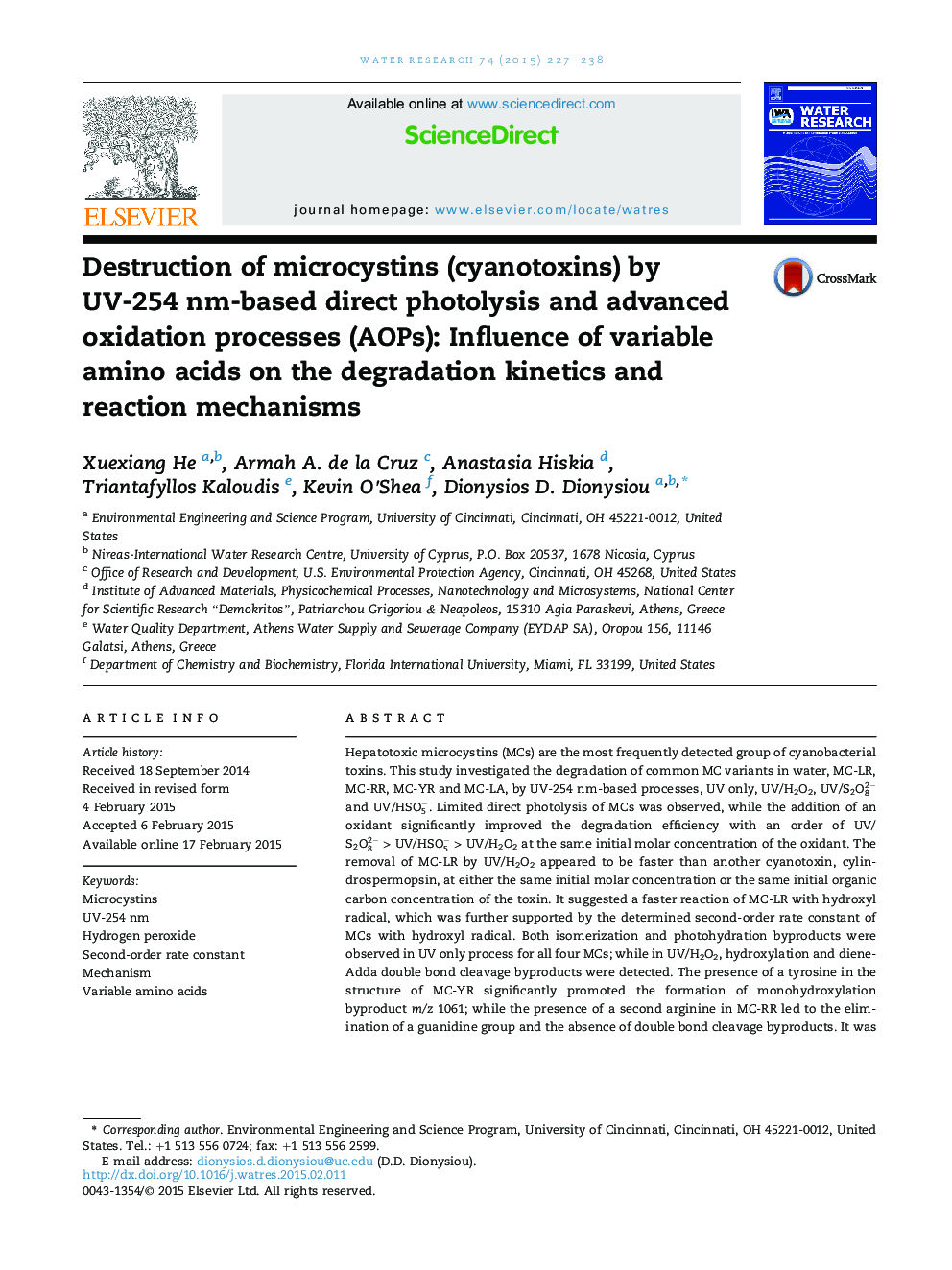| کد مقاله | کد نشریه | سال انتشار | مقاله انگلیسی | نسخه تمام متن |
|---|---|---|---|---|
| 4481279 | 1623094 | 2015 | 12 صفحه PDF | دانلود رایگان |

• HSO5− was far more effective than H2O2 and S2O82− in degrading MC-LR in dark.
• Degradation efficiency followed UV/S2O82− > UV/HSO5− > UV/H2O2 > UV only.
• k
• OH/MCs were at a magnitude of 1010 M−1 s−1, with MC-YR > MC-RR > MC-LR > MC-LA.
• Isomerization and photohydration byproducts were observed in UV only process.
• Variable amino acids influenced the formation and distribution of the byproducts.
Hepatotoxic microcystins (MCs) are the most frequently detected group of cyanobacterial toxins. This study investigated the degradation of common MC variants in water, MC-LR, MC-RR, MC-YR and MC-LA, by UV-254 nm-based processes, UV only, UV/H2O2, UV/S2O82− and UV/HSO5−. Limited direct photolysis of MCs was observed, while the addition of an oxidant significantly improved the degradation efficiency with an order of UV/S2O82− > UV/HSO5− > UV/H2O2 at the same initial molar concentration of the oxidant. The removal of MC-LR by UV/H2O2 appeared to be faster than another cyanotoxin, cylindrospermopsin, at either the same initial molar concentration or the same initial organic carbon concentration of the toxin. It suggested a faster reaction of MC-LR with hydroxyl radical, which was further supported by the determined second-order rate constant of MCs with hydroxyl radical. Both isomerization and photohydration byproducts were observed in UV only process for all four MCs; while in UV/H2O2, hydroxylation and diene-Adda double bond cleavage byproducts were detected. The presence of a tyrosine in the structure of MC-YR significantly promoted the formation of monohydroxylation byproduct m/z 1061; while the presence of a second arginine in MC-RR led to the elimination of a guanidine group and the absence of double bond cleavage byproducts. It was therefore demonstrated in this study that the variable amino acids in the structure of MCs influenced not only the degradation kinetics but also the preferable reaction mechanisms.
Figure optionsDownload high-quality image (149 K)Download as PowerPoint slide
Journal: Water Research - Volume 74, 1 May 2015, Pages 227–238